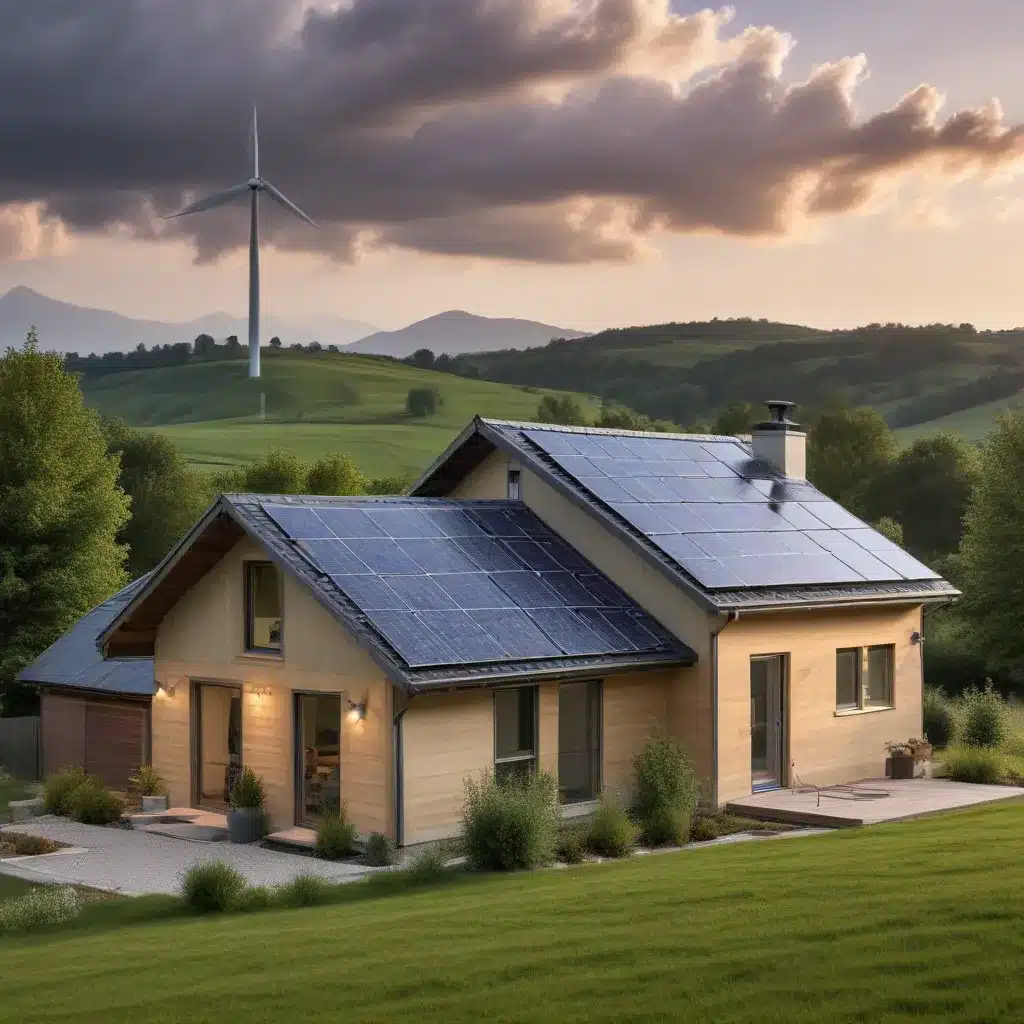
As the global community strives to combat climate change and reduce our reliance on fossil fuels, the transition towards renewable energy has become a critical priority, especially in Europe. Across the continent, governments, businesses, and homeowners are embracing a diverse suite of clean energy technologies to power their homes and communities more sustainably.
Renewable Energy Sources
Solar Power
Solar photovoltaic (PV) systems have emerged as a leading renewable energy solution for European households. With rapidly falling equipment costs and attractive government incentives, rooftop solar installations are becoming increasingly accessible and cost-effective for homeowners. These systems convert the sun’s energy directly into usable electricity, providing a clean, reliable source of power that can offset grid-supplied energy and lower utility bills. Advanced solar inverters and smart home energy management systems further enhance the integration of solar power, allowing homeowners to monitor, optimize, and even store their generated electricity.
Wind Power
While not as ubiquitous as solar on the household level, small-scale residential wind turbines are gaining traction in certain European regions with favorable wind resources. These compact turbines, installed either on the rooftop or in the yard, can supplement a home’s electricity needs with renewable wind energy. Though they may require more specialized installation and maintenance compared to solar, residential wind power offers an alternative for homeowners seeking to diversify their renewable energy portfolio.
Hydroelectric Power
For homes located near suitable water sources, micro-hydroelectric systems can provide a reliable and renewable source of electricity. These small-scale hydropower generators harness the kinetic energy of flowing or falling water to spin turbines and produce electricity. While the feasibility of micro-hydro is limited by geography, it represents an innovative way for some European homeowners to leverage their local natural resources for clean, sustainable power.
Home Energy Efficiency
Alongside the deployment of renewable energy technologies, improving the energy efficiency of homes is a crucial component of sustainable living. Strategies such as enhanced insulation, high-performance windows, and energy-efficient appliances can dramatically reduce a home’s overall energy consumption, enabling renewable sources to more effectively meet the residual power demand.
Insulation and Weatherization
Proper insulation and weatherization of a home’s envelope—the walls, roof, and windows—can significantly reduce heating and cooling loads, decreasing the amount of energy required to maintain comfortable indoor temperatures. Advanced insulation materials, such as spray foam and vacuum-insulated panels, provide superior thermal performance, while air sealing techniques minimize unwanted air infiltration.
Energy-Efficient Appliances
Upgrading to ENERGY STAR-certified appliances, including refrigerators, washing machines, and HVAC systems, can yield substantial energy savings. These high-efficiency devices are engineered to provide the same functionality while consuming significantly less electricity or natural gas, lowering both utility costs and the home’s carbon footprint.
Smart Home Technology
The emergence of smart home technologies further enhances energy efficiency by enabling homeowners to monitor, control, and optimize their energy use. Smart thermostats, connected lighting, and home energy management systems can learn household routines, adjust settings automatically, and provide detailed analytics to help residents make informed decisions about their energy consumption.
Sustainable Heating and Cooling
Residential heating and cooling account for a significant portion of a home’s energy demands. Transitioning to renewable and efficient technologies for these essential functions is a key aspect of sustainable living.
Heat Pumps
Heat pump systems, which transfer heat rather than generate it through combustion, have emerged as a clean and efficient alternative to traditional furnaces and air conditioners. These versatile technologies can provide both heating and cooling by moving heat in and out of the home as needed, reducing reliance on fossil fuels and electricity.
Geothermal Systems
For homeowners with suitable land, geothermal heat pump systems tap into the stable, moderate temperatures of the earth’s subsurface to heat and cool the home. By utilizing the ground or groundwater as a heat source or sink, geothermal systems can achieve remarkable energy efficiency and eliminate the need for fossil-fuel-powered HVAC equipment.
Passive Solar Design
Incorporating passive solar design principles into home construction or retrofits can leverage the sun’s energy to naturally heat and cool living spaces. Strategies such as strategic window placement, thermal mass materials, and optimized shading can reduce the need for mechanical heating and cooling, further enhancing a home’s sustainability.
Environmental Impact of Home Energy
The shift towards renewable energy and energy-efficient technologies in homes has profound implications for the environment, contributing to the broader global efforts to combat climate change.
Reduced Carbon Footprint
By replacing fossil fuel-derived electricity and heating with clean, renewable sources, homeowners can significantly reduce the carbon emissions associated with their daily energy use. This directly supports national and regional decarbonization goals, moving Europe closer to its ambitious targets for greenhouse gas reductions.
Preserving Natural Resources
Renewable energy technologies, such as solar, wind, and hydropower, harness the sun, wind, and flowing water—abundant, naturally replenishing resources—to generate electricity. In contrast, traditional fossil fuel-based power generation depletes finite resources and can disrupt fragile ecosystems. The widespread adoption of renewable energy in homes contributes to the preservation of these vital natural resources.
Combating Climate Change
The cumulative impact of sustainable home energy solutions, when adopted at scale, can play a pivotal role in Europe’s broader efforts to mitigate climate change. By reducing greenhouse gas emissions and preserving natural systems, these technologies help homeowners and communities make tangible progress towards a more sustainable future.
As the European Union continues to drive its ambitious renewable energy targets and net-zero emissions goals, the widespread deployment of renewable energy and energy-efficient technologies in homes will be essential. Through a combination of innovative technologies, government incentives, and public-private partnerships, European homeowners are empowered to take control of their energy use and contribute to a greener, more sustainable future.







